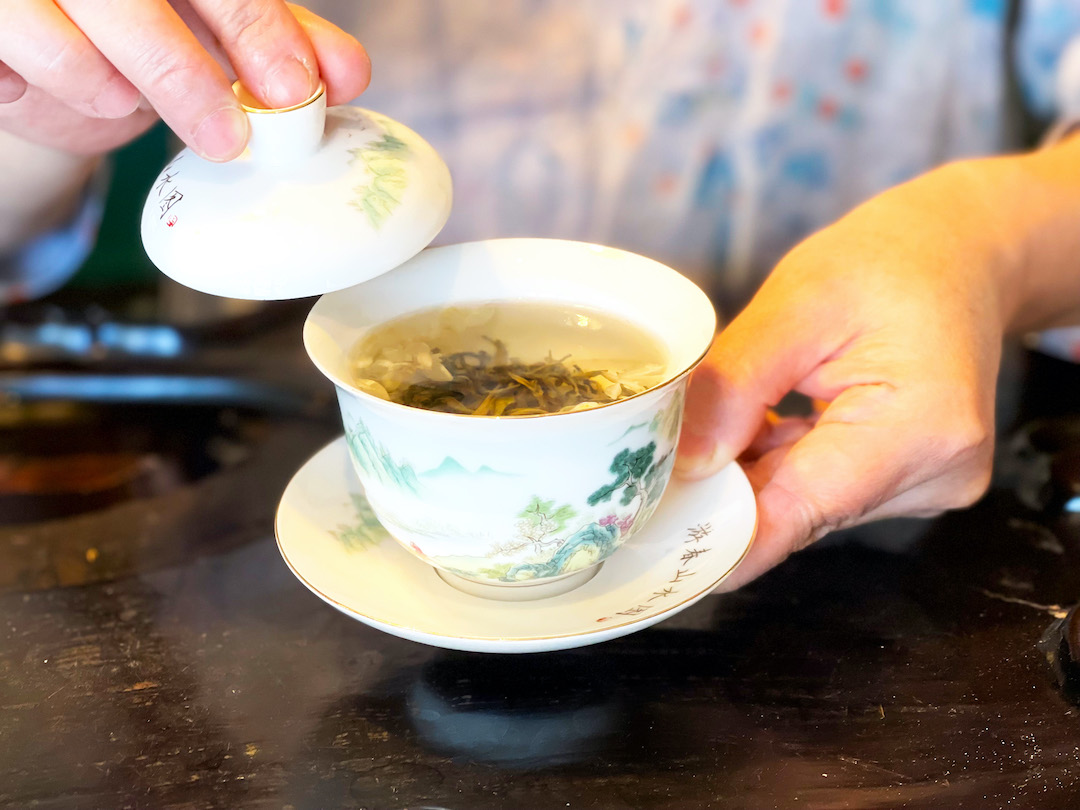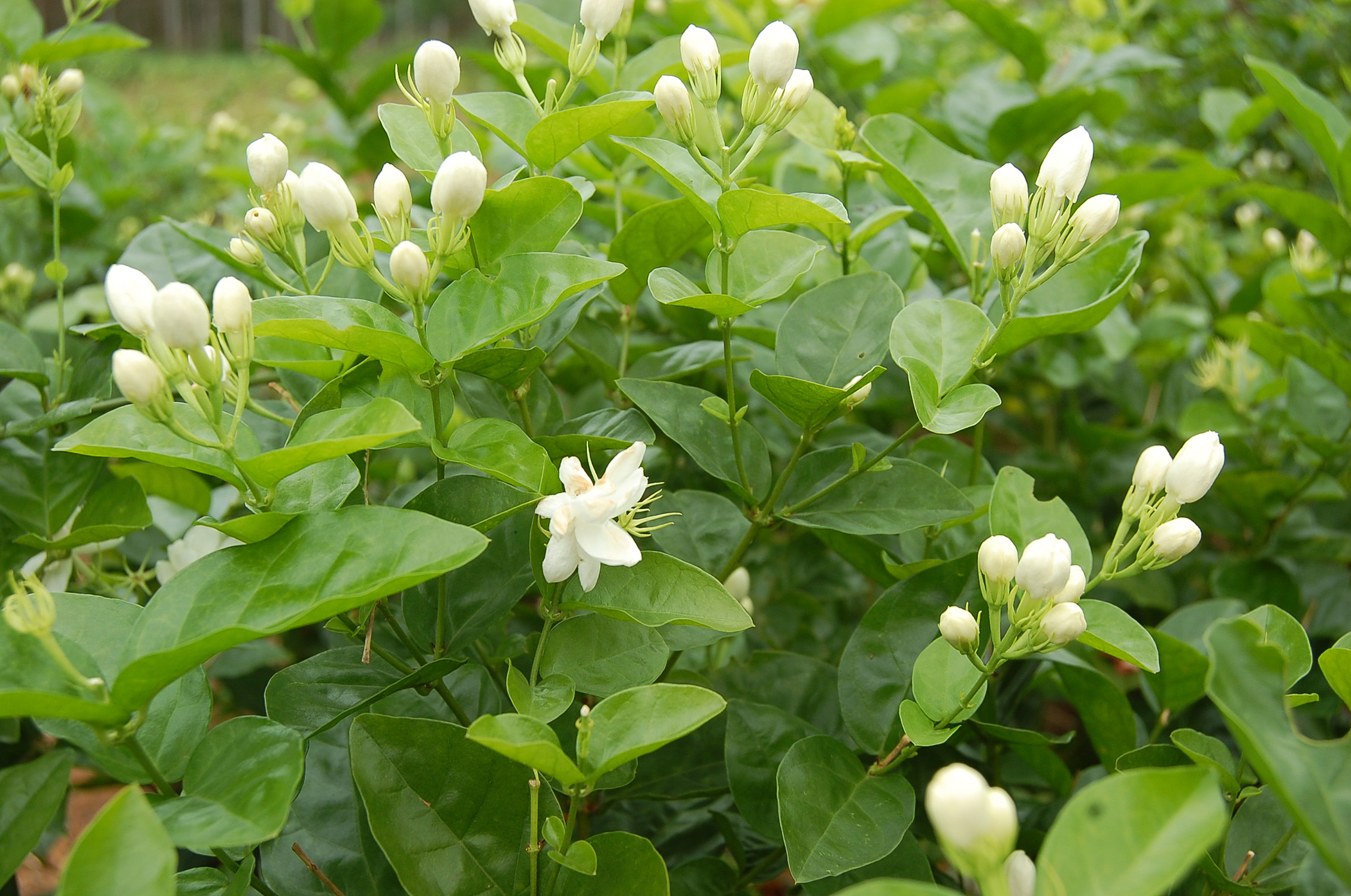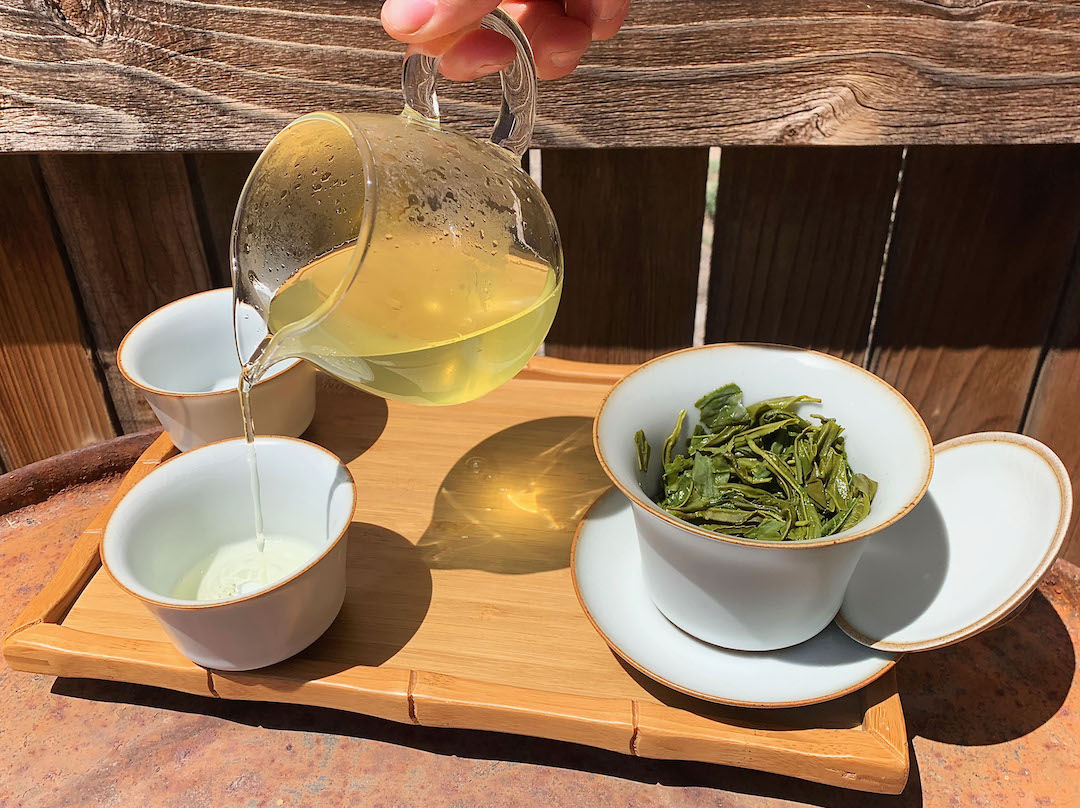Newsletter Archive Aug. 19, 2022

This weekend we’re featuring all jasmine teas, all gaiwan and all tea accessories.
Born of Sichuan, humble and sophisticated, ancient and modern: a well-used Gaiwan exudes charm and commands reverence. As the legend goes, the first gaiwan was designed by the daughter of a Tang Dynasty Provincial Governor. In the damp cold of the dynasty’s western border, she designed a lid to keep her bowl of tea warm (they drank their tea from bowls in those days, oh yes). She then made a saucer of wood and wax to keep the vessel full of hot liquid cool to the touch.
And there it was: a bowl, a saucer, and a lid. A brewing apparatus so elegant and so practical, it’s survived the march of history.
Once you get comfortable using a gaiwan, you’ll find the real magic is in the lid. So easy to manipulate, it becomes the multitool of the tea table. The lid can strain back your leaves with fineness, signal a tea house server that you need more water, capture the most fragile and fleeting aromas of a tea, and in Zhuping’s upbringing (a daughter of Sichuan herself!) it was also the way to give a child a tiny sip of tea, a little saucer to sip from.

Along with gaiwan, we’re also featuring another favorite daughter of Sichuan: Jasmine teas.
At the apex of the selection, you’ll find the Sichuan-grown Bi Tan Piao Xue (Snow Drop) Jasmine tea. A jasmine tea that doesn’t compromise the quality of its green tea base nor scent with anything other than pure jasmine, it’s name translates more fully as “The Snowflake floating in a jade pond.” Such poetic elegance is matched in its pure and layered aroma. There’s a small but significant overlap in the aroma compounds of the tea leaf and the jasmine flower. When you’ve got a good quality brew from both plants, the result is a narcotic wave of Jasmonates in double exposure.
For even punchier Jasmine flavors, look to Fujian Province’s Jasmine Pearls. Their secret ingredient? Mixing in a few magnolia flowers during this tea’s natural scenting through enfleurage.
If you’re near Tucson this weekend, we hope you’ll join us at the teahouse. Zhuping is teaching gaiwan skills all day on Saturday. Drop in, score a pretty gaiwan, fill it with Jasmine tea and enjoy the monsoon rain with us.
If you’re far away, we’ll still hope you’ll join us from afar with a cup of tea tea from these Sichuan classics.

